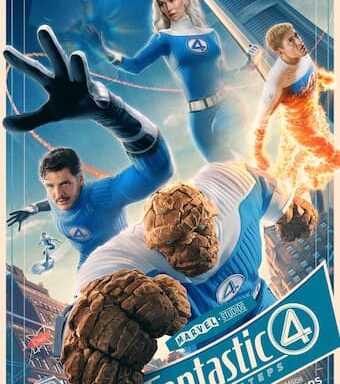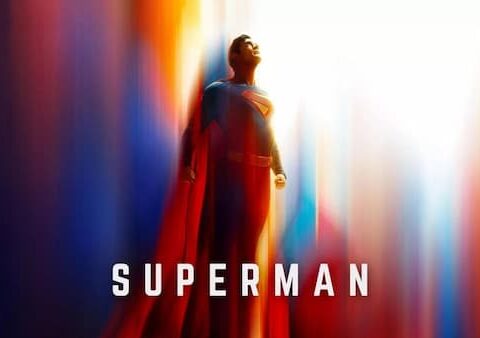Not sure I can pinpoint precisely what it is that makes the Uncanny Avengers always tick the right boxes for me as a comic book reader.
I’ve genuinely enjoyed every iteration of the title, from Steve Rogers’ first developing the ‘Unity Squad’ to 2015’s short-lived Rick Remender run. Something about the way Uncanny Avengers always feels, the energy of it and the character dynamics, always seems to find the winning formula.
There always seems to be a vitality and vibrancy to this title, even when the stories aren’t necessarily all that great.
I particularly did enjoy the 2015-ish run (mostly centered on the Counter-Earth storyline) and was sad to see it ended too quickly.
This time around, with the title rebooted, there’s the expected shake-up of personnel, but the quality level remains pretty high. Ryan Stegman’s illustration style is very idiosyncratic, even a touch eccentric, but it generally works pretty well for the tone of this book.
This probably isn’t the strongest squad line-up we’ve had; but the dynamics are good enough to make for enjoyable high-jinks. And frankly, so long as we’ve got Rogue and Deadpool, everything else just falls into place. Bringing Cable into the mix also proves a solid move.
The first few issues tie into and help set the stage for things coming further down the line in the MU, touching on the Terrigen threat to Mutants, while giving us an old-fashioned apocalyptic threat to the planet in the form of the ‘Shredded Man’. It’s all reasonably solid, lively stuff.
Uncanny Avengers #5 gets Rogue, Deadpool and Johnny Storm going after the Red Skull (there’s lots of distraction across this series, but the squad’s primary mission statement is still, on paper, to get back Professor Xavier’s brain).
Again, it’s all fun stuff without too much cerebral demand. It’s always good to have Rogue center-stage, at any rate; and the Stegman/Isanove cover art of Rogue and Gambit in a nostalgic embrace triggered all kinds of 90s X-Men nostalgia for me from the get-go (although the situation on the cover turns out to be clever sleight-of-hand).
Uncanny Avengers #6 is another fun mish-mash of events. The Wrecker hitting the Avengers Mansion only to find it populated by cosplay look-alikes and wannabes creates some lighthearted absurdities and a bunch of fun references. Just the idea in general of the former Avengers Mansion being turned into a tacky amusement attraction lends itself to some welcome comedy.
Meanwhile, Synapse’s reaction to Medusa and New Attilan provides the more meaningful character work of the book.
Uncanny Avengers #7 brings us into the Pleasant Hill storyline, which means you have to refer to several other comic books before coming to Uncanny Avengers #8.

#8 itself is one of this series’ best single issues, however. Centering on Rogue in the early scenes is a winning formula (the Rogue/Xavier cover really drew me in all the more too): we essentially see her going through the routines of her mundane daily life in Pleasant Hill, unaware of her real identity.
Everyone else in town is suffering the same illusion, but it’s Rogue that is the one to break through the fog. I absolutely loved the way this is done in the story – specifically, having Rogue subconsciously commune with the memory of Professor Xavier and this acting as the mind-splinter that wakes her from the fake reality.
This thing of Rogue revisiting the Professor in her mind has been done a few times already in Uncanny Avengers’ runs; but it’s generally always great material to read. I always value the reminder of those old X-Men days and here is no different.
This material is all rich in Rogue (and X-Men) mythology, but also very interesting in general, particularly the Professor’s suggestion that Rogue develop a method for her subconscious to be able to warn her conscious mind when something is wrong.
Rogue’s memory shows us that she chose the Professor himself to be that signal: hence why the memory of him is what acts as her wake-up alarm from this false reality now. It’s all intriguing, thoughtful material here, albeit material that also plays to my nostalgia (there’s a particular panel with Rogue and the Professor, which includes a Nightcrawler and Wolverine cameo in the memory – but which also, presumably, makes it clear to us that this is an actual real memory she is drawing from).
Whether the younger Rogue created this subconscious trigger mechanism herself or whether the Professor implanted the trigger/memory into a safe space in Rogue’s mind, this whole aspect of the story works really, really well.
In general, this whole business of Pleasant Hill also is a strong premise that creates a genuinely interesting situation, touching on all kinds of ideas about the nature of reality, consciousness, Simulation Hypothesis, ‘The Matrix’, etc.
The fact that Rogue’s ‘contact’ with the memory of Professor X begins with a Morpheus-like phone call is probably also a direct reference to The Matrix movie.
Uncanny Avengers #9 takes us into a different story, centering on the sudden return of Hank Pym (previously thought dead), albeit a weird, Pym/Ultron symbiosis situation that has everyone suitably freaked out.
For all Pym’s assurances that he is himself and is doing okay, it’s pretty damn obvious to anyone reading this that all is not peachy here (and even if it wasn’t, the cover preview for Uncanny Avengers #10 further gives the game away). Nevertheless these initial scenes of Pym’s return, the various characters reacting to his presence, and Pym’s own trying to re-adjust to the situation here at home, are all fairly well written.
Pepe Larraz’s art style is generally enjoyable, though it feels imprecise in places: however, David Curiel’s colors counteract this being a problem and, especially in the early pages, the visuals are really strong (especially the images of Rogue flying out into space).
This issue also benefits from making very good use of Rogue. Her early encounter with Gambit is a fun aside, while her flying out into space feels like a really iconic Rogue image to me and makes me wish we have her doing this more often. It is Rogue who comes across the returning Pym/Ultron first. Later, when Pym takes off, it is Rogue who Cap sends after him to “keep an eye” on him – leading to a genuinely nice couple of Rogue/Pym scenes.
Uncanny Avengers #10 swiftly ends any hopes of a Hank Pym love-fest, but does so with some good, well-paced storytelling. Bringing Jan/Wasp in to test the returned Hank/Ultron is an obvious – but nevertheless very good – choice; though the real intrigue in #10 is in Captain America’s actions rather than anyone else’s. This is a good issue though, riding on solid visual presentation and effective pacing, which makes the book feel over way too quickly.

In Uncanny Avengers #11, we descend into inevitable confrontation between Pym/Ultron and his former friends. This confrontation draws in some welcome guests to the Uncanny Avengers party, including (crucially) Vision, Captain Marvel and, later, Iron Man. Vision’s presence, and his anger, brings a lot to the equation, and in general this is another solid installment, aided by fluid, winning illustration and color. It’s mostly action throughout, though some of Jan’s reactions provide an emotional undercurrent.
I do wonder, reading this, whether ‘Pym’ is actually right in his accusation that his former friends have abandoned him too easily. I don’t know that we, as readers, are meant to think that – but he seems to have a case.
Uncanny Avengers #12 concludes the Pym/Ultron arc, with Vision, Rogue, Voodoo and the others taking drastic measures to eliminate the Ultron threat. I like that a pre-fabricated plan was already in place to deal with Ultron (albeit, key elements of it were in place originally to deal with the Hulk): some might argue that it’s an easy, convenient plot-device to make it easy for the writer to resolve the story, but I take the other view – that it shows, in a good way, that Stark, Banner and others are always thinking, always making contingency plans.
As unerringly solid as the presentation is in this book (as it is in the entire series), there are good and not-as-good things here.
Some of the dialogue exchanges between Pym/Ultron and the others veers a little into the silly, cliched comic-book fare. There’s also a really unresolved question here of whether Hank Pym is alive here or whether Ultron is simply using his likeness – and I find it a little uncomfortable, the extent to which this matter seems to have not been decisively answered, given that the team basically disposes of him/it by throwing him/it into the Sun.
It seems odd to me that ‘Ultron’ would complain so much about how his friends abandoned him (Pym) in space and didn’t make more effort to look for him. That suggests, to me, that Pym is doing the talking at those points. Which makes some of his ‘friends’ behaviour now very questionable too. I feel like this story, and its accompanying themes and ideas, could’ve been done better and should’ve maybe had a little more clarity to it.
I also find the ending (‘Ultron’ apparently is alive in a “neutrino”, despite everyone thinking he’s been incinerated) an annoying, cliched comic-book ending that doesn’t do the story much credit and, in fact, makes me wonder what the point of this story arc was at all.
It had some good material and good moments scattered across a few issues, but, really, what was the point of bringing back Pym/Ultron, then apparently eliminating him again, only to learn at the end that he/it is still alive and already plotting his revenge?
As will prove to be the case in some later issues as well (specifically, the Hulk/Japan arc), there are stories here that probably don’t hold up very well, but which are salvaged – in terms of comic-book reading experience/enjoyment – simply by the fact that the character dynamics are so electric and the visual presentation is so solid.
On the plus side here, it’s cool to see everyone coming together early on to confront the problem; particularly bringing Stark and Vision to town and, later on, having Carol Danvers come to the rescue. A Rogue/Danvers reunion (for all of two panels) is also a welcome bonus.
In all though, despite some Ultron-related annoyances, this is another solid, fun run of this title. Maybe not quite as engaging as the previous runs – but still up there with the best monthly titles currently available.
Read on for the reviews of the next sequence of Uncanny Avengers issues.




